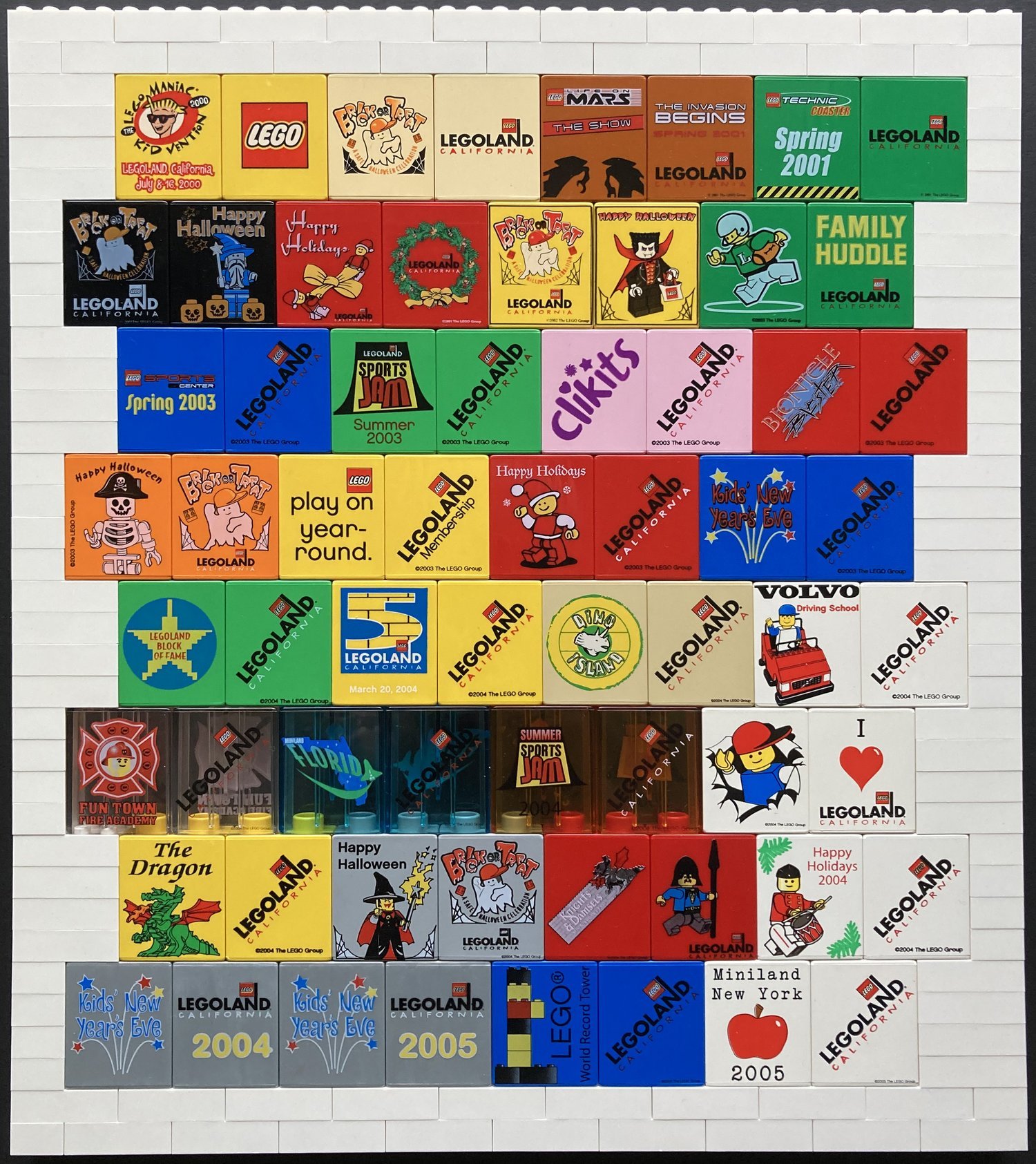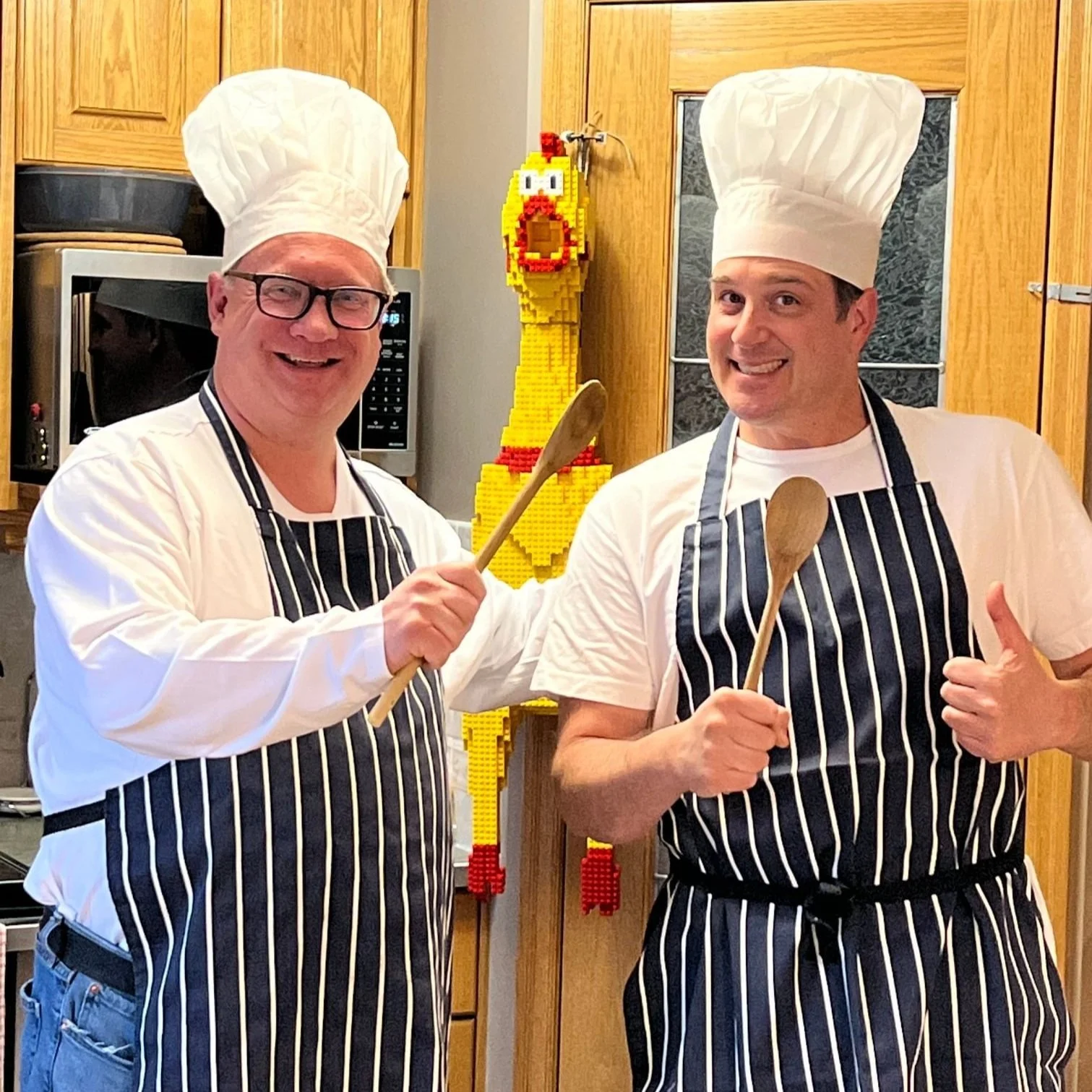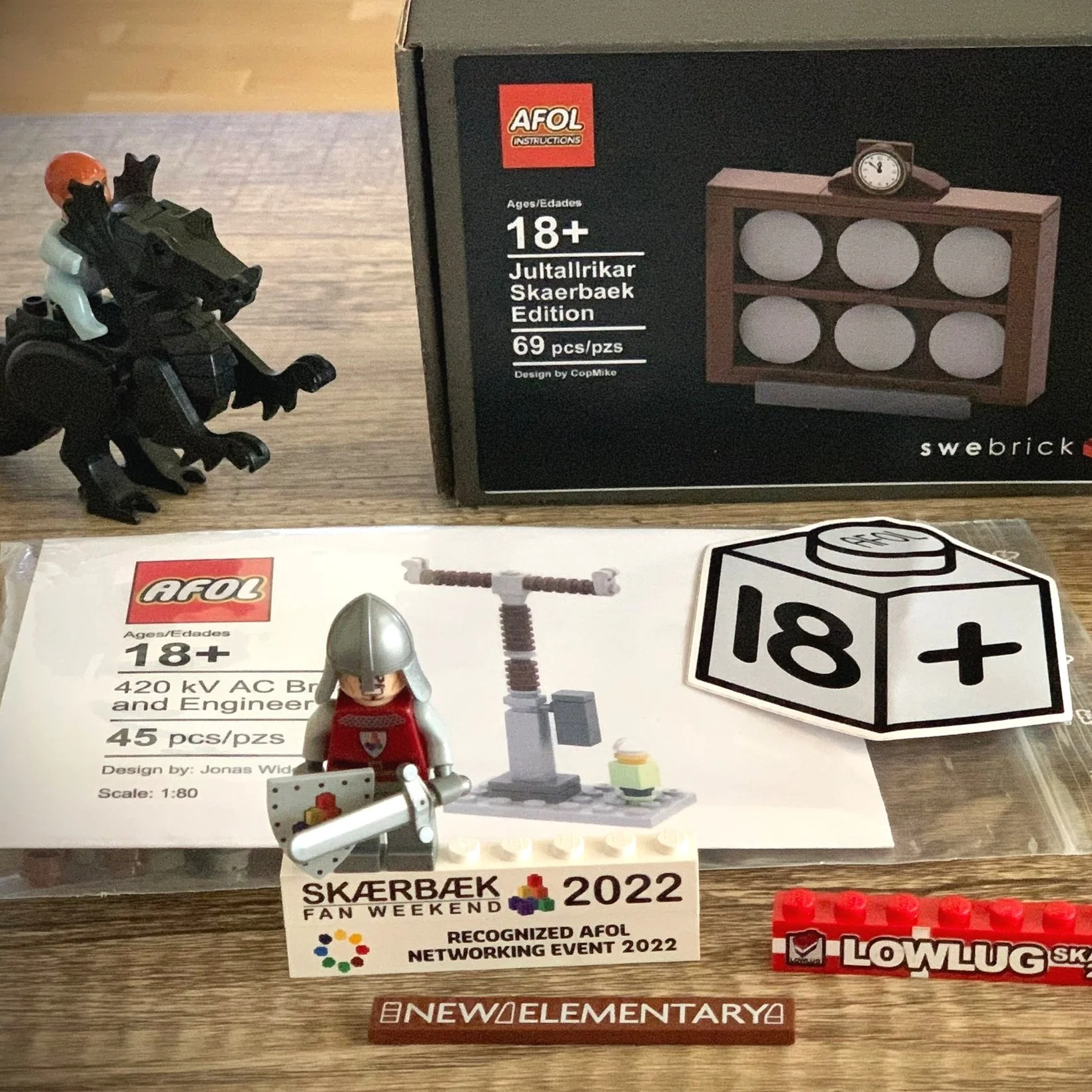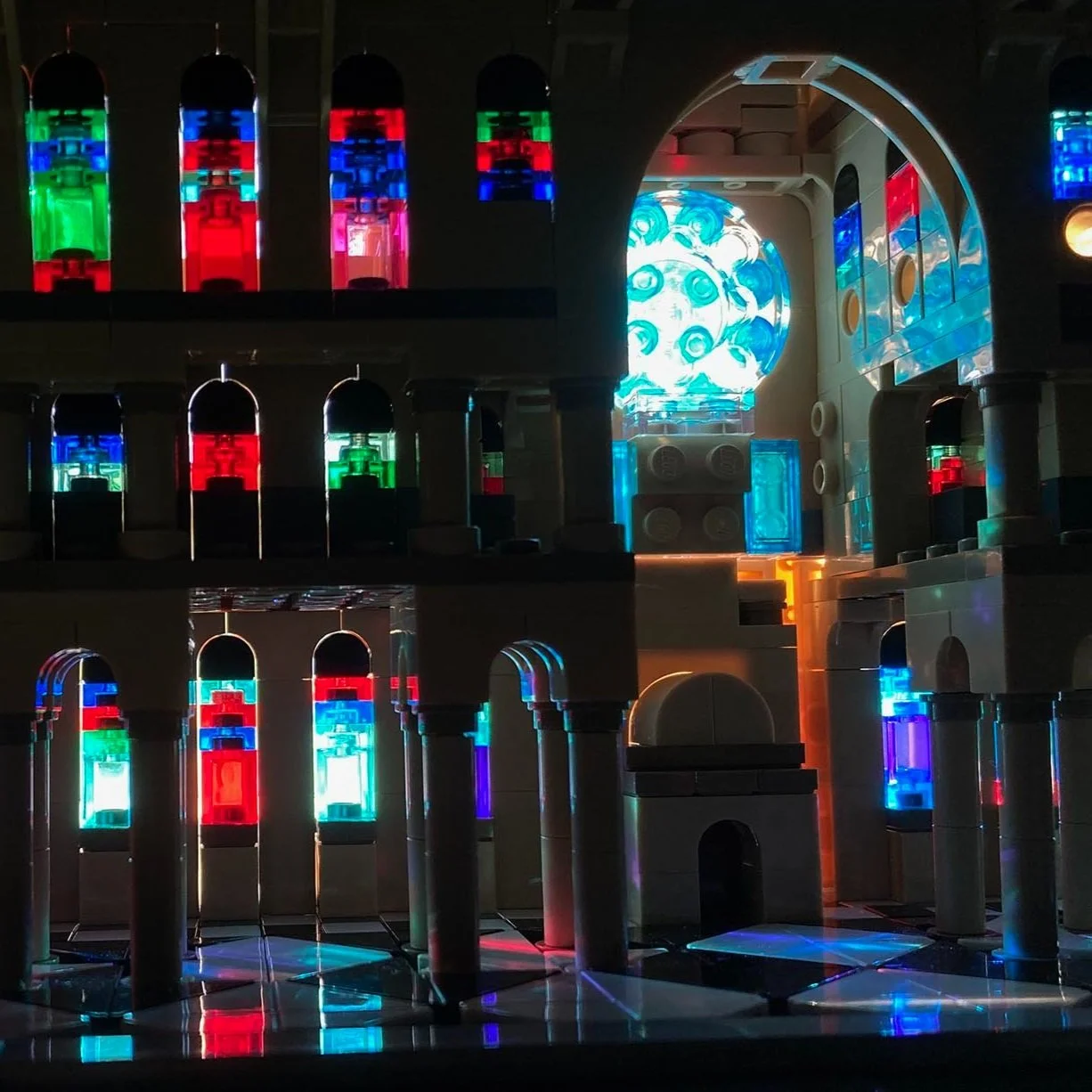Roots That Unite Us: LEGO in Guatemala
/I was the loudly burst of the jungle and the river,
and the voice between two echoes, I rose on the slopes.
On one side I was stretched by the hands of the water,
and on the other side, the mountains took root.
~ "Agua, vida y tierra" by Julia de Burgos
Last month we looked at a LEGO creation from Latin America. Another entry from the first round of the same Bricks in Bits contest “BiBuilders Latinoamérica 2021“ has been completed by La Vida en Bloques challengers. Their MOC is called “Roots that unite us“—a creation that includes nature and people, and also some hidden symbolism. Let’s find out more in an interview with its creators. (This interview was conducted in Spanish, so some literal translation may have slipped through, sorry about that!)
Sergio: Could you tell us about yourselves?
Julio: Hello, my name is Julio Ernesto (Arfelan Nest). I am an IT engineer and I am 32 years old, I live in Guatemala. Aside from Flickr, I also post on Eurobricks and share some MOCs in the Facebook page of Lug Guatemala.
Diego: Hello, my name is Diego (diegoboy). I am 26 years old, I am an architect and together with Julio we are members of La Vida en Bloques, the official LUG of Guatemala.
Sergio: Regarding the creation, the challenge was to represent what unites us as Latin Americans. How did you come up with this idea?
Diego: I think we were looking for what our Latin American cultures have in common, these being our pre-Hispanic roots.
Julio: I think that the main idea was to go back to the essence of what we wanted to transmit. First we were suggested what would unite us with some physical or other intangibles such as Latin blood, language, music, gastronomy, etc. But it occurred to Diego that we should go to the origin of everything, and it was perfect.
Sergio: Did you make a sketch or did you let the bricks flow?
Diego: We were limited in time (editor’s note: they have five days to build, photograph/render and upload), so we basically defined the type of construction we wanted to do; We looked for reference images and began to build, there was not much pre-design process honestly. In the same way, it was chosen to build in digital because we wanted to transmit this culture and roots in bright colors, and the color palette of physical bricks of both was also limiting.
Sergio: Who were the people featured based on?
Julio: I believe we had to use archetypes to be able to cover a wider range of cultures, therefore representing a standard image of the inhabitants. It is notable that while one figure stands out for gold, the next one features textiles. The different pre-Columbian cultures worked on these aspects with varying degrees of effectiveness.
Diego: When we look for references, we took inspiration from the Latin American muralists, mainly those of the last century (the 50s and 60s). From our country, Guatemala, I could mention the art of Carlos Mérida or Efraín Recinos. I think the people that we illustrate in our MOC, rather than representing someone in particular, sought to represent all of us as Latin Americans.
Sergio: Regarding the different patterns in the background, are they inspired by any particular culture?
Diego: I think that similar to what was mentioned above, we tried to look for something that could be identified as Latin American, rather than placing something typical of each nation—something that encompasses all our cultures. We take as main elements the patterns present in the textiles of the different countries, as well as the bright colors that can be seen in Guatemalan huipiles, Inca ponchos, etc.
Julio: The textiles of the traditional costumes also evoke the way in which the different groups dress, both pre-Columbian and post-conquest. Historically in our country, there is a great variety of these typical costumes, and in a similar way also in Latin America to different degrees.
Sergio: I could say that the earth green represent mountains (with jungles perhaps), but what about the medium blue/azur lines on the sides and the circular green structure that is in the center?
Julio: One interpretation of the inner circumference is that they are concentric circles that start from the same origin; that are growing, our cultures are a mixture of many aspects from different parts, and that this diversity represents a richness that makes us grow, that is increasing.
Diego: Correct, another common characteristic that we found in our countries was the natural resources and landscapes that we possess. The green represents the mountains, forests and jungles of the region, and the blue lines represent the sky and the rivers and lakes. In the center, we place a sun because it is an element that gives life and was venerated by many of the pre-Columbian civilizations. In the center, we place four plates (the only studs seen in the MOC) to represent the hobby (LEGO) that unites us as communities. And also present are the primary colours, of which we can get all the others by mixing them.
Sergio: Thank you for sharing with us. Is there anything else you would like to add?
Diego: For my part, I am grateful for the opportunity to talk and take us into account. I always look favorably on activities that help promote LEGO within Latin American countries. It shows that there is also quality in our countries.
Julio: Thanks for the invitation. I would like to add that throughout this experience of the competition Diego has been the leader, the inspiration, and the executor to a greater extent of the creations that have been presented. Personally, I consider him the best builder in Guatemala and perhaps among the top three in Latin America. Thank you for spreading the hobby.
REFERENCES:
[1] "Structural Study for a Mural (Estudio estructural para mural)", Carlos Mérida. Source: Los Angeles County Museum of Art.
[2] "El Evangelio según San Pueblo", Efraín Recinos Valenzuela. Source: Pintores Latinoamericanos, Juan Carlos Boveri.
[3] ”Ceremonial huipil, Ixil Maya, San Juan Cotzal, c. 1970s, cotton - Textile Museum of Canada”, Daderot. Source: Wikimedia Commons.
[4] ”Trarican macun (child's poncho) from Chile, Mapuche people, Honolulu Museum of Art”, Hiart. Source: Wikimedia Commons.
Is there any detail you like in this MOC? Have you found other creations displaying your national heritage? Leave your thoughts in the comments below.
Do you want to help BrickNerd continue publishing quality articles like this one? Become a patron to show your support, get early access, exclusive swag and more.

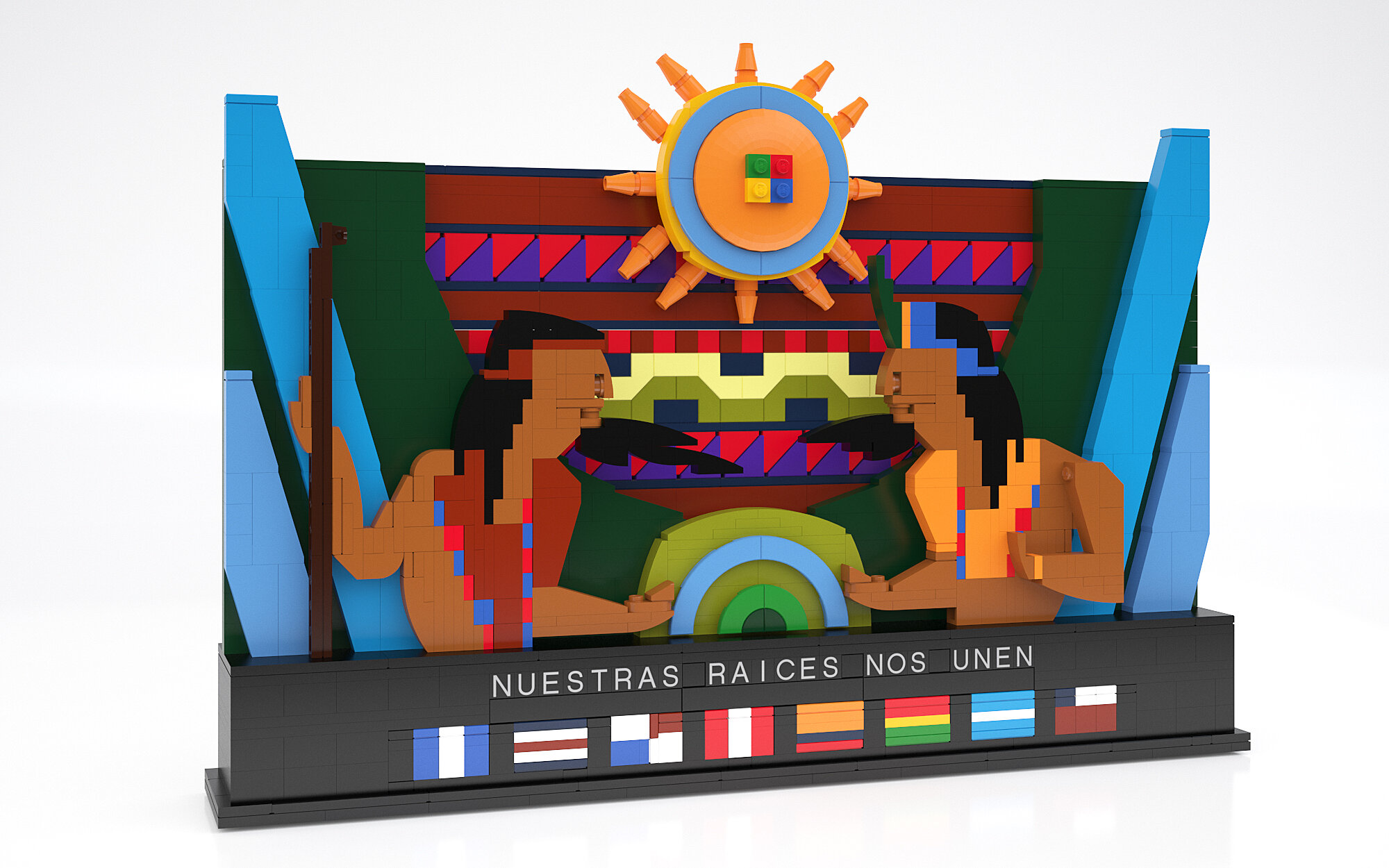
![Structural Study for a Mural [1]](https://images.squarespace-cdn.com/content/v1/51967abae4b0fe8d0161031f/1622521807534-0EAAP5F3GIZGR3J21MJA/structural-study-for-a-mural.jpg)
![El Evangelio según San Pueblo [2]](https://images.squarespace-cdn.com/content/v1/51967abae4b0fe8d0161031f/1622521808951-E187DUHAKN42O8RHX88X/el-evangelio-segun-san-pueblo.jpg)
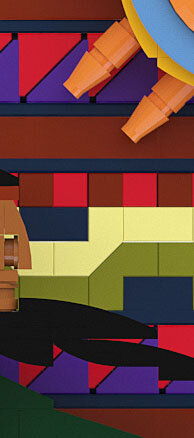
![Ixil Maya Huipil [3]](https://images.squarespace-cdn.com/content/v1/51967abae4b0fe8d0161031f/1622443946868-8YII0W6DDGC9TKQ4ZN1G/ixil+maya+ceremonial+huipil.JPG)
![Mapuche Makuñ [4]](https://images.squarespace-cdn.com/content/v1/51967abae4b0fe8d0161031f/1622443928672-VB0HLRAZLS0MUGS2A0NI/mapuche+trarican+macu%C3%B1.JPG)




